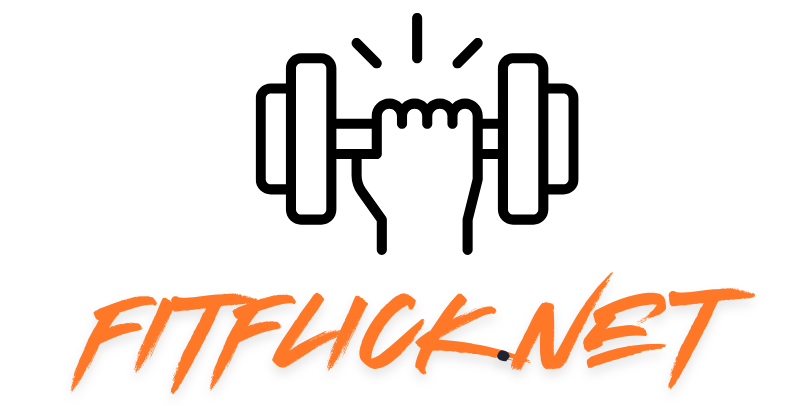Did you know adults make over 35,000 decisions in a single day? Many of these are influenced by the constant stream of notifications and endless scrolling on our devices. This overwhelming digital overload has become a significant source of stress for 18% of U.S. adults1.
Linda, a working professional, struggled with this issue. She found herself sacrificing sleep to check emails and social media, leading to increased anxiety and reduced productivity. Her story highlights the growing need for a digital detox—a way to step back and find balance in a hyperconnected world.
Excessive screen time has been linked to sleep disorders, eye strain, and even feelings of inadequacy due to social comparison2. A digital detox isn’t about abandoning technology entirely but using it intentionally to improve focus, sleep, and overall well-being.
By setting boundaries and creating tech-free zones, individuals can reduce stress and reclaim their lives. This guide will explore practical strategies to manage digital overload and foster a healthier relationship with technology.
Key Takeaways
- Excessive screen time contributes to stress and sleep disorders.
- A digital detox helps improve focus and productivity.
- Setting boundaries with technology promotes mental well-being.
- Tech-free zones encourage relaxation and connection.
- Mindful usage of devices enhances overall life balance.
Understanding the Impact of Digital Overload
The constant buzz of notifications has become a modern-day challenge. Digital overload occurs when the volume of information exceeds our ability to process it, leading to mental fatigue and decreased productivity3. This phenomenon is reshaping how we interact with the world, often at the cost of our well-being.
Effects on Mental Health and Well-Being
Excessive use of devices contributes to disrupted sleep, increased stress, and reduced overall well-being4. Studies show that multitasking between emails, messages, and apps can reduce productivity by as much as 40%4. The pressure from social media comparisons also fosters anxiety and feelings of inadequacy5.
Prolonged screen time is closely linked to physical issues like eye strain, neck pain, and poor posture4. These problems can lead to long-term health concerns if not addressed. Recognizing these effects is the first step toward finding balance.
Recognizing Signs of Digital Fatigue
Early signs of digital fatigue include difficulties with concentration and excessive device checking3. Constant task-switching, such as checking emails while working, can lead to cognitive fatigue, making tasks feel overwhelming5.
Individuals who frequently check their phones report higher levels of stress and anxiety compared to those who limit their digital engagement5. Understanding these signs helps in taking proactive steps to manage digital consumption.
| Signs of Digital Fatigue | Impact |
|---|---|
| Difficulty concentrating | Reduced productivity |
| Excessive device checking | Increased stress |
| Sleep disruptions | Poor sleep quality |
| Social media-induced anxiety | Lower self-esteem |
By recognizing these signs, individuals can take steps to reduce digital overload and improve their quality of life. Implementing a structured approach to technology use can foster healthier habits and stronger relationships.
Digital Detox: Reclaim Your Mental Health in a Hyperconnected World
Finding balance in a tech-driven society is becoming increasingly challenging. Many individuals struggle with the constant pull of notifications, emails, and social media updates. This section explores practical ways to establish boundaries and embrace mindfulness to reduce stress and improve well-being.

Establishing Healthy Boundaries with Technology
Setting clear limits on device usage is essential for reducing digital fatigue. Experts recommend designating specific times to disconnect, such as during meals or before bed. For instance, turning off screens by 8 p.m. can significantly improve sleep quality6.
Creating tech-free zones, like bedrooms or dining areas, fosters healthier habits. Studies show that 50% of people who implement these zones report better focus and stronger personal relationships7.
“The key to managing technology is not to eliminate it but to use it intentionally.”
The Power of Mindfulness and Offline Engagement
Mindfulness practices, such as meditation or deep breathing, can counteract the distractions of a hyperconnected world. Just five minutes of daily mindfulness can improve mental well-being6.
Engaging in offline activities, like reading or exercising, helps restore genuine connections. Research indicates that 65% of individuals feel calmer after reducing screen time7.
| Strategy | Benefit |
|---|---|
| Tech-free zones | Improved focus and relationships |
| Mindfulness practices | Reduced stress and anxiety |
| Scheduled breaks | Enhanced productivity |
| Offline activities | Restored personal connections |
By adopting these strategies, individuals can reclaim their time and prioritize mental clarity. A balanced approach to technology use leads to a more fulfilling and stress-free life.
Practical Digital Detox Strategies for a Balanced Life
Many people underestimate how much time they spend on screens daily. The average American spends over seven hours staring at devices, often leading to stress and fatigue8. To regain control, it’s essential to adopt practical strategies that promote balance and well-being.

Implementing a Structured Routine
Creating a structured routine is the first step toward reducing screen exposure. Start by setting specific times for device use, such as limiting email checks to certain hours9. Designate tech-free zones in your home, like the bedroom or dining area, to encourage relaxation and connection.
Experts recommend scheduling regular breaks from devices. For example, the 20-20-20 rule suggests looking at something 20 feet away for 20 seconds every 20 minutes to reduce eye strain10. These small changes can make a big difference in daily life.
Choosing Offline Activities and Hobbies
Engaging in offline activities is a powerful way to counterbalance screen time. Reading physical books, taking outdoor walks, or pursuing creative hobbies can restore focus and reduce stress9. Studies show that 65% of individuals feel calmer after reducing their digital engagement9.
Physical activities, like yoga or jogging, not only improve physical health but also enhance mental clarity10. By replacing screen time with meaningful activities, individuals can foster a more fulfilling lifestyle.
Leveraging Technology Tools
Ironically, technology itself can help manage screen time. Apps that monitor usage provide insights into daily habits and encourage healthier practices9. Turning off unnecessary notifications minimizes distractions and improves focus10.
For those who struggle with constant engagement, implementing a “Digital Sabbath” for one day a week can significantly enhance mindfulness and personal connections10. These tools and practices make it easier to maintain a balanced approach to technology.
| Strategy | Benefit |
|---|---|
| Tech-free zones | Improved focus and relationships |
| Offline activities | Reduced stress and enhanced creativity |
| Screen time monitoring apps | Better awareness of digital habits |
| Digital Sabbath | Enhanced mindfulness and connections |
By integrating these strategies into daily life, individuals can achieve a healthier balance between technology and personal well-being. Small, consistent changes lead to lasting benefits.
Conclusion
Reducing screen time can lead to significant improvements in focus and sleep quality. Studies show that 70% of people who take a break from devices report better rest11. This highlights the importance of setting boundaries with technology.
Implementing strategies like tech-free zones and scheduled breaks can reduce stress and enhance relationships. Research indicates that 65% of individuals feel more present in their personal connections after a detox11. Small steps, such as turning off notifications, can make a big difference.
Taking regular breaks from devices fosters mental clarity and productivity. A structured routine helps maintain balance and improves overall well-being. Start today by dedicating time to offline activities and reclaiming control over your day.
FAQ
What is a digital detox?
How does excessive screen time affect mental health?
What are the signs of digital fatigue?
How can one set boundaries with technology?
What are some offline activities to try during a detox?
Are there tools to help monitor screen time?
How long should a digital detox last?
Can a digital detox improve productivity?
Source Links
- How Digital Detoxing Can Help You Reclaim Your Mental Wellness — Wove Therapy – https://www.wovetherapy.com/blog/digital-detoxing-can-help-reclaim-your-mental-wellness
- How to disconnect with a digital detox and reclaim your life – https://www.ombbank.com/blog/digital-detox-unplugging-and-finding-balance-in-a-hyperconnected-world
- Digital Detox – Benefits Of Unplugging In A Hyper-Connected World – https://www.brainzmagazine.com/post/digital-detox-benefits-of-unplugging-in-a-hyper-connected-world
- Digital Detox: Reclaim Your Time, Focus, and Peace of Mind – https://medium.com/@kennethdavidthomaskt/digital-detox-reclaim-your-time-focus-and-peace-of-mind-54a4e68f728a
- Online Counselling | Online Therapy| Marriage Counsellors | TalktoAngel – https://www.talktoangel.com/blog/reclaiming-your-mental-space-in-a-digital-world
- Digital Detox: Reclaiming Your Mental Wellbeing in a Hyperconnected World – ELYSIAN Magazine – https://readelysian.com/digital-detox-reclaiming-your-mental-wellbeing-in-a-hyperconnected-world/
- Digital Detox: Rediscovering Balance in a Hyperconnected World – https://medium.com/@baslaazhar/digital-detox-rediscovering-balance-in-a-hyperconnected-world-ba87cea467cc
- 7 digital detox strategies that transform well-being – https://rollingout.com/2025/02/27/7-well-being-digital-detox-strategies/
- The Ultimate Guide to Successfully Accomplishing a Digital Detox – https://www.digitalwellnessinstitute.com/blog/the-ultimate-guide-to-successfully-accomplishing-a-digital-detox?srsltid=AfmBOoq9fJm0adwCEzUQ4b67GSiQ6zuLuB1VFJEHzl9l-b3IIT__Wm5p
- Digital Detox Strategies – https://podcompany.com/blogs/news/digital-detox-strategies?srsltid=AfmBOoqoB4jUz4aafdVt06EvL8LDrXI2XhGZVxPYhKKUMrHhqtDiaWKM
- The Art of Digital Detox: Reclaiming Your Mind in a Hyperconnected World – https://medium.com/illumination/the-art-of-digital-detox-reclaiming-your-mind-in-a-hyperconnected-world-bba67f75efa7




